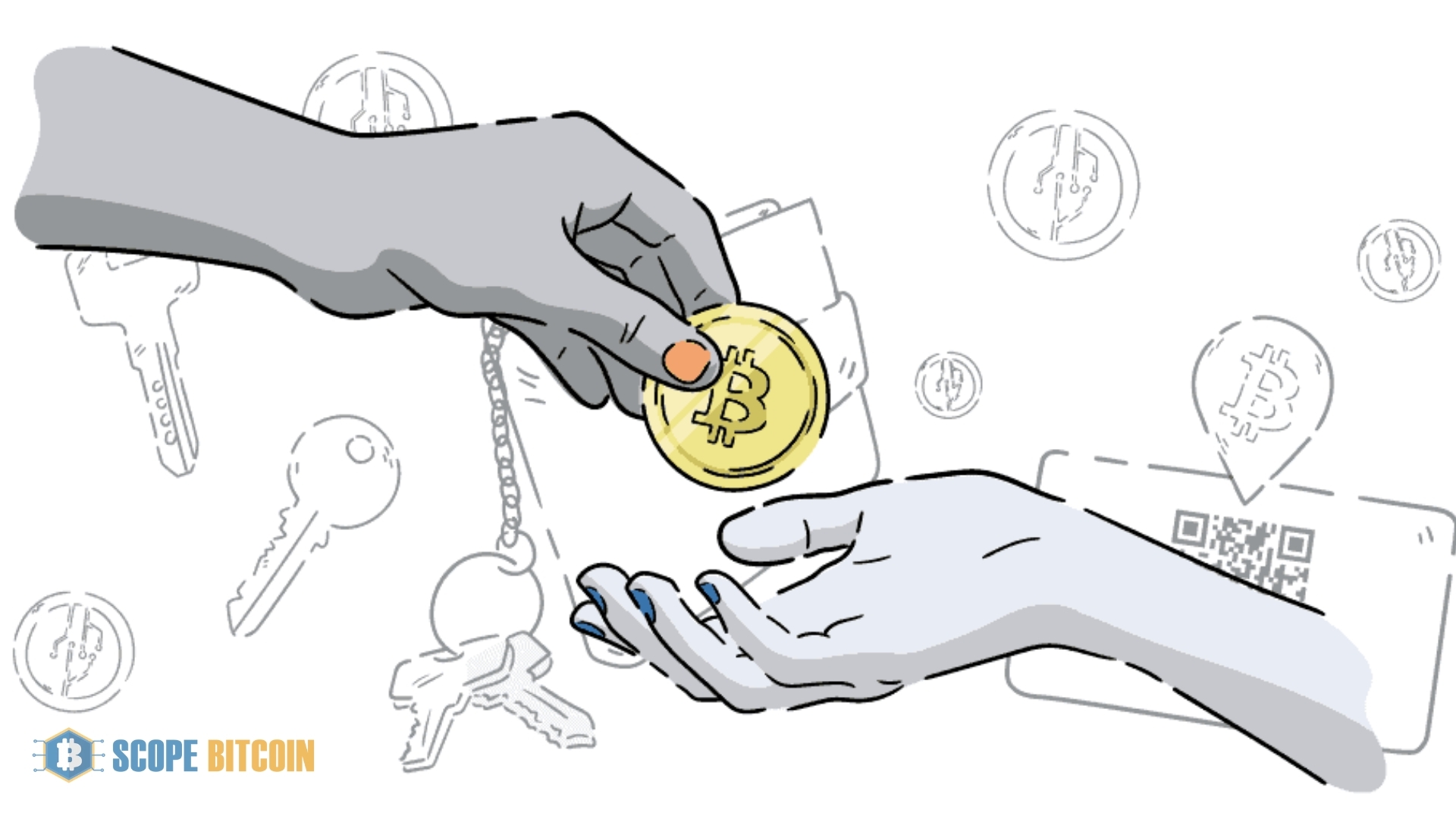
Bitcoin Blockchain Analysis: Exploring World’s Most Popular Crypto
The Bitcoin blockchain is one of the most innovative technologies of the last decade. Since Bitcoin’s launch in 2009 by the pseudonymous creator, Satoshi Nakamoto, the blockchain technology underpinning it has been scrutinized, celebrated, and extensively researched. This peer-to-peer, decentralized network enables secure, transparent, and immutable transactions without intermediaries. At the heart of the Bitcoin network is its blockchain: a distributed ledger that records all transactions across the network.
In this article, we will examine Bitcoin’s blockchain, including its structure, transaction mechanisms, mining process, and tools used for analysis. We will also explore how this analysis provides insights into user behavior, transaction patterns, and security.
What is the Bitcoin Blockchain?
The Bitcoin blockchain is a chain of blocks, each containing a list of terrified and confirmed transactions by the network’s miners. These miners compete to solve a complex cryptographic puzzle in a process called Proof of Work (PoW). Once the puzzle is solved, the block is added to the blockchain, and the miner is rewarded with newly minted bitcoins and transaction fees.
Each block references the previous block via a cryptographic hash, creating an immutable chain of records. This immutability is one of Bitcoin’s most crucial features. It ensures that once a transaction is added to the blockchain, it cannot be altered without consensus from thmostetwork participants, making Bitcoin tamper-resistant and highly secure.
Key Features of the Bitcoin Blockchain
- Decentralization: Unlike traditional financial systems that rely on centralized authorities like banks or governments, Bitcoin’s blockchain is maintained by a decentralized network of nodes spread across the globe. Each node contains a full copy of the blockchain, contributing to its resilience and security.
- Transparency: All transactions on the Bitcoin blockchain are public and can be viewed by anyone with access to the internet. While users’ identities are pseudonymous, their wallet addresses and transaction details are fully visible, making Bitcoin an open system.
- Security: The combination of cryptographic hashing, Proof of Work, and decentralization ensures that the Bitcoin network is highly secure. Attacking the Bitcoin blockchain would require most of the network’s computing power, making such an attack prohibitively expensive and logistically complex.
Bitcoin Transactions: How They Work
A Bitcoin transaction is a transfer of value between Bitcoin wallets. When users initiate a transaction, they broadcast it to the network, where nodes and miners verify it. Bitcoin transaction typically consists of the following:
- The following inputs refer to the source of the bitcoins being spent. InTheyome from previous transactions are recorded on the blockchain.
- Outputs: Tecify the recipient’s wallet address and the amount being transferred.
- Transaction Fee: Miners are incentivized to include transactions in the next block by the fees attached to transactions. Higher fees generally lead to faster transaction confirmations.
Once verified, a transaction is grouped with others into a block, and miners compete to solve the PoW puzzle. The successful miner adds the block to the blockchain, making the transaction permanent.
Blockchain Analysis Tools and Techniques
As Bitcoin has grown in popularity, various blockchain analysis tools have been developed to provide insights into transaction patterns, wallet behavior, and network health. These tools are widely used by researchers, traders, law enforcement, and regulators to monitor and understand activity on the Bitcoin blockchain. Some popular blockchain analysis tools include:
- Block Explorers: These sites, like Blockchain.info and Blockchain, allow users to view the entire Bitcoin blockchain. Users can search for specific blocks, addresses, or transactions to monitor movement across the network.
- Chainalysis: A more sophisticated platform used by institutions and law enforcement, Chainalysis provides deep insights into Bitcoin transactions, identifying wallet clusters, tracking illicit activity, and offering analytics to ensure compliance with regulations.
- Glassnode: This platform offers advanced on-chain data and metrics that traders and analysts use to understand market sentiment. By analyzing wallet behavior, coin age, and transaction volume, Glassnode provides insights into when major market movements may occur.
- Elliptic: Similar to Chainalysis, Elliptic specializes in tracking and analyzing blockchain data to detect and prevent criminal activities such as money laundering, terrorist financing, and ransomware payments.
What Blockchain Analysis Reveals About Bitcoin Usage
One of the key advantages of blockchain analysis is its ability to provide unprecedented transparency into how Bitcoin is used across the network. While individual identities remain pseudonymous, blockchain data reveals key trends and patterns that can provide insights into user behavior and network health.
- Transaction Volume: By analyzing the number of daily Bitcoin transactions, analysts can gauge network activity and user adoption. High transaction volume often indicates increased interest in Bitcoin, while declining transaction volume may signal waning market interest.
- Wallet Activity: Blockchain analysis can track wallet activity, identifying “whales” (large holders of Bitcoin) and their movements. Significant transfers from whale wallets to exchanges, for instance, might signal an upcoming sell-off, while large wallet accumulation often precedes a price rally.
- Exchange Flows: Analysts can predict potential market movements by tracking Bitcoin inflows and outflows to exchanges. Large inflows to exchanges may suggest that traders are preparing to sell their assets, while large outflows may indicate that users are moving their funds into cold storage for long-term holding.
- Coin Age and Dormancy: Another key insight from blockchain analysis is the age of Bitcoin in circulation. Coins that haven’t moved in a long time are often recalledHODL” coins. A rise in the movement of these old coins may suggest long-term holders are selling, which could impact market sentiment.
Privacy Concerns and Bitcoin’s Pseudonymity
Although Bitcoin is often hailed as an anonymous currency, it is pseudonymous rather than truly anonymous. Each transaction is publicly visible on the blockchain. a. While wallet addresses are not directly tied to an individual’s identity, it’s possible to link a wallet address to a person using blockchain analysis.
Companies like Chainalysis and Elliptic have become adept at identifying wallet clusters and linking them to known entities such as exchanges, payment processors, and darknet markets—challenges for individuals seeking privacy led to the rise of privacy-focused coins like Monero and Zcash.
To enhance privacy, some Bitcoin users utilize techniques like CoinJoin, which mixes multiple transactions into one, making it harder to trace the original transaction. However, these techniques are not foolproof and can be de-anonymized with sufficient resources.
Future Trends in Bitcoin Blockchain Analysis
As Bitcoin continues to evolve, so do the techniques and tools used to analyze its blockchain. Some key trends to watch in the coming years include:
- Layer 2 Solutions: As the Bitcoin network faces scalability issues, solutions like the Lightning Network are being developed to facilitate faster and cheaper transactions. Blockchain analysis tools will need to adapt to track activity on these Layer 2 solutions, which could provide more privacy to users.
- Regulation and Compliance: As governments and regulators develop new cryptocurrency rules worldwide, blockchain analysis is critical in ensuring compliance with anti-money laundering (AML) and know-your-customer (KYC) regulations. This will likely lead to even greater scrutiny of transactions on the Bitcoin blockchain.
- DeFi and Smart Contracts: While Bitcoin itself does not natively support smart contracts, projects like Rootstock are working to bring decentralized finance (DeFi) capabilities to Bitcoin. As these developments unfold, blockchain analysis will expand beyond simple transactions to include more complex financial instruments.
Conclusion
Bitcoin blockchain analysis provides valuable insights into how the world’s leading cryptocurrency is used and evolves. From transaction patterns and wallet behavior to privacy concerns and regulatory scrutiny, understanding the Bitcoin blockchain is key to unlocking the full potential of this groundbreaking technology. As Bitcoin continues to gain mainstream acceptance, blockchain analysis will remain an essential tool for individuals and institutions looking to navigate this dynamic and rapidly changing landscape.







